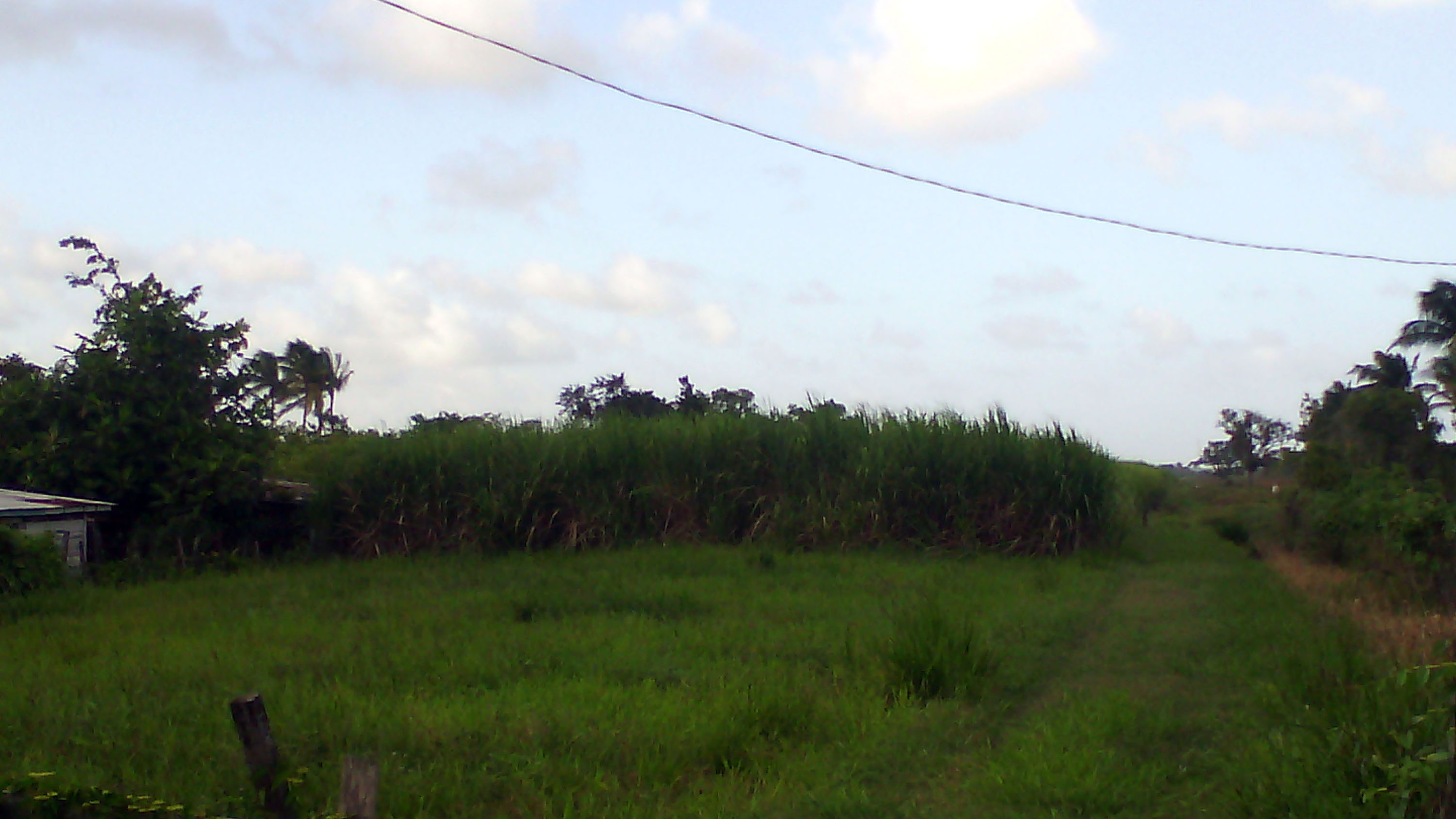New Aanlegt is the longest of the villages in Canal Number Two with a population of approximately 2,500 people. The name is Dutch in origin and is often misspelt; it appears as ‘Annlegt’ on the village sign. Most of the residents are of East Indian descent.
 The sun was barely peeking through the clouds and the wind blew through the trees on the day the World Beyond Georgetown visited New Aanlegt. Fish splished-splashed in the shallow drains. Many of the houses were tightly shut and there was abundant vegetation everywhere whether it was fruits or vegetables or weeds. A truck speeding by dropped into one of the many potholes along the way.
The sun was barely peeking through the clouds and the wind blew through the trees on the day the World Beyond Georgetown visited New Aanlegt. Fish splished-splashed in the shallow drains. Many of the houses were tightly shut and there was abundant vegetation everywhere whether it was fruits or vegetables or weeds. A truck speeding by dropped into one of the many potholes along the way.
Seventy-nine-year-old Chaitnaraine Nohar seemingly bored sat at a table scratching on pieces of paper. The newspaper lying on the table seemed to have already been read from cover to cover. According to Nohar, his grandparents came from India as indentured servants in the late 1800s. They lived on the Leonora Estate. When indentureship ended, they settled in New Aanlegt. His parents were born there and so was he.
At the tender age of six Nohar lost his mother who died during childbirth. Canal Number Two, at that time, he said, was prone to flooding. “My grandparents planted coffee. They had bought acres of land with coffee on it from some Portuguese people,” he said.
Villagers who worked at the Wales Estate walked over ten miles to work, while the folks living on the Conservancy Dam at the end of Canal Number Two walked along the dam to the Leonora Estate, he said. In fact, he said, the

